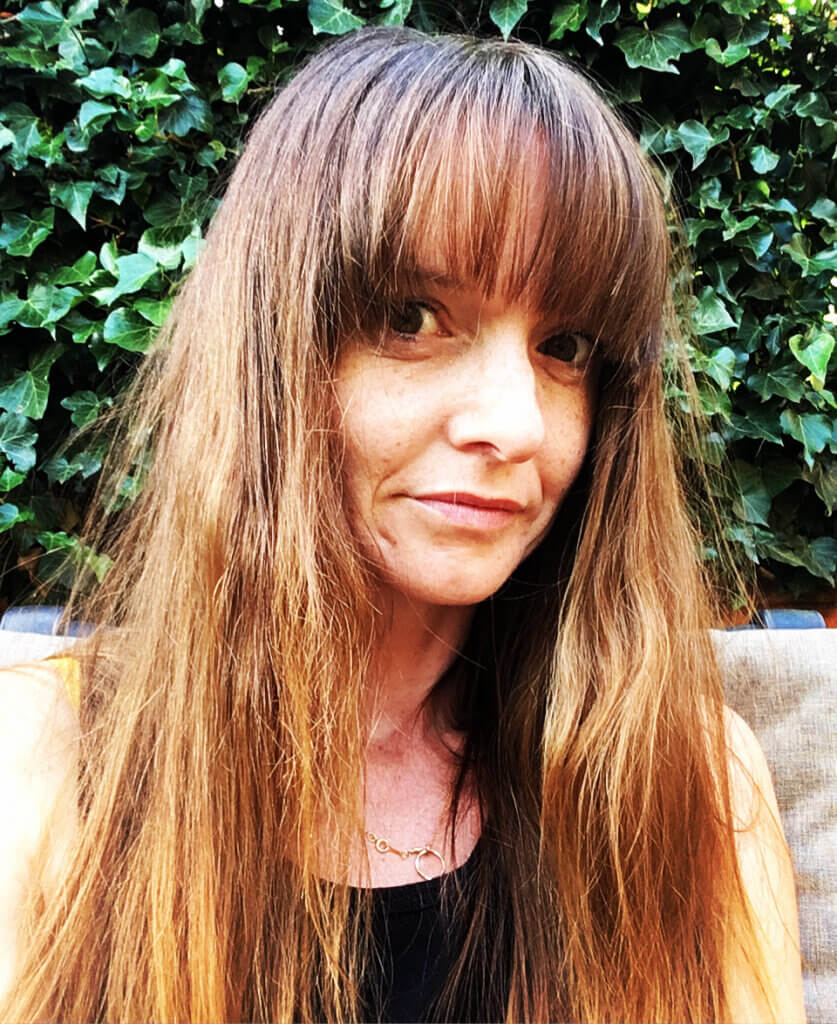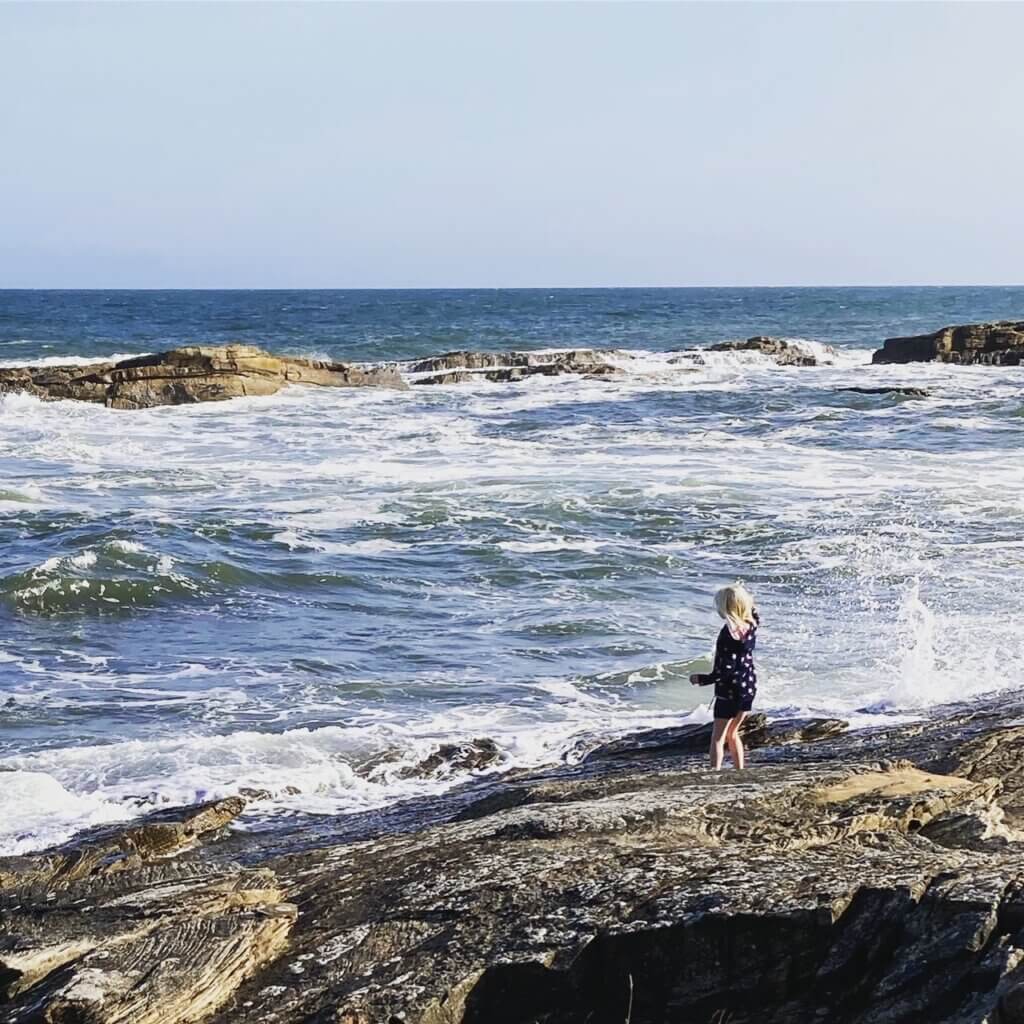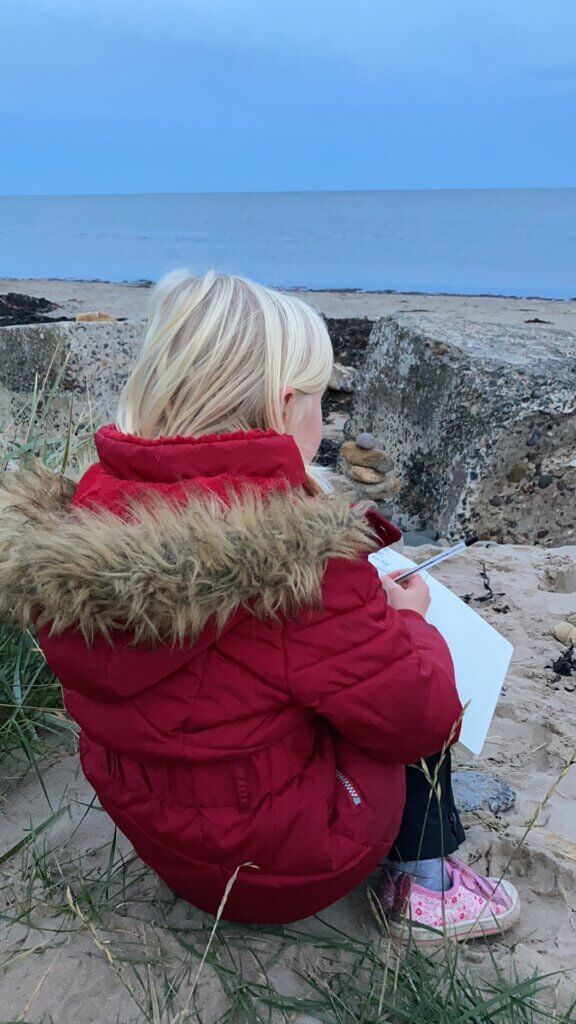
Caro Fentiman is a writer and musician living in Northumberland. You can read more of her work at www.carofentiman.com and on instagram @carofentiman
The impact of mothering on nature writing
Following on from Daphne Pleace’s excellent guest blog on nature writing and gender, I wanted to share some of my own thoughts on nature writing and motherhood.
As part of my study on the MA in Nature and Travel Writing at Bath Spa University, I decided to investigate the relationship between mothering and writing in the field. I am a single parent of four daughters (Betty, 13, Mary, 10, Mabel, 8 and Flo, 6), the oldest of whom has a diagnosis of high-functioning autism and does not attend school. My writing research and field trips are, by necessity, usually done with my children, and I need to work in a way that will include them.
Cyril Connolly’s claim that “there is no more sombre enemy of good art than the pram in the hall” has been brandished as a warning against the impact of children on creativity. I wanted to demonstrate that its reduction of parenting to an endurance test no longer holds sway, and that the participation of children in the creative process can be positive and enhancing.
There are scant historical examples of mothers’ writing directly influenced by their work in the field. Impoverished mothers usually lacked the education required and their time was spent working and caring for family. Wealthy mothers often relinquished daily care of their children to nurses, and the content of their work generally excluded their maternal roles. Many renown female writers did not have children at all.
One notable example of a mother travelling with her child and writing about her experiences, not just of the places she visits, but also her relationship with her child, is Mary Wollstonecraft. In 1795, Wollstencraft embarked on a trip to Scandinavia with her daughter. In ‘Letters Written During a Short Residence in Sweden, Norway, and Denmark’ (1796), Wollstonecraft writes that her daughter “was sleeping with equal calmness – innocent and sweet as the closing flowers…a weak melancholy…hung about my heart at parting with my daughter for the first time.”
Here, Wollstonecraft set a precedent for the memoir genre that has become so popular today (more of this in Daphne’s guest blog). Her work is a precursor to books such as Katherine Norbury’s ‘The Fish Ladder’ and Rosie Kinchen’s forthcoming book, ‘The Ballast Seed: A Memoir of Motherhood, Nature and Staying Afloat’, where honest reflections upon motherhood are entwined with nature writing. The emergence of memoir as such a popular genre is in no small way due to the opportunity it offers to mothers to have their voices heard. Historically marginalised and under-represented, women’s tales of motherhood and how it affects their lives hold a huge place in the publishing industry. The truth in the writing resonates with readers. Specifically within the field of nature writing, Esther Woolfson’s ‘Corvus: A Life With Birds employed lived experiences of mothering to combine memoir and natural history.
When I reflect on my early years of motherhood, writing in the field, with a baby on my hip or a toddler on my knee, was a way of expressing myself and connecting with others. This form of expression started as a blog – ‘Five Go Adventuring’ – and varied from diaries of trips we had taken to political articles about the state of education.

When the children were tiny, note-taking played a small part in the way I approached writing in the field. I relied heavily on memory, photographs and babbled conversations with my children. In order to reject and overcome “the pram in the hall”, mothers have had to be creative in their quest for self-expression.
In ‘Braiding Sweetgrass’, Robin Wall Kimmerer details her move to a smallholding in upstate New York and combines her expert botanical knowledge with descriptions of her life with two daughters. She writes honestly about raising her girls in this rural corner of America whilst sharing her expertise. There is an intimacy between author and reader that demonstrates the essential creative outlet that writing in the field offers to mothers for whom time to create is so precious.
Looking back now at my old blog, it also serves as a memory aid, a record of my life when the girls were babies, so in that sense it resembles a diary. It is more than that though: I used my surroundings, and my experiences of spending time in them with my children, to explore my emotions and to reflect on my place in the world:
“The sky outside is lingering between blue and grey, and it’s hard to tell which way the weather will go today. The clocks have nudged life on a notch, swallowed an hour that I will not get back, but perhaps given me the momentum to move forward. Upstairs, my bed has been taken over by three sleeping children: one by one, accompanied by a little sob, they crawled in beside me, clutching a favourite teddy or blanket.”
At times my writing is brutally honest, on the challenges of parenting or the breakdown of my marriage, but it is always rooted in the place and is coloured by my role as a mother.
One of the great advantages to the coexistence of writing in the field and mothering is the love and fascination that it nurtures in children of the natural world. By engaging the youngest humans with our planet, they will hopefully behave more responsibly than older generations and restore some of the damage that has been wreaked. Robert MacFarlane wrote about the slow-burn impact of writing in the field and specifically of writing about nature, suggesting “literature can lead to activism and feed into policymaking.”
An advantage of sharing my creative process with my children is that they read my work and then produce words and ideas of their own. Mabel spends every Friday at beach school. She sits in the dunes and writes poems about Dunstanburgh Castle and the changing skies. She has seen me do this time and again, and I know that it is one way she can express her love for the natural world.
The value of seeing things through a child’s eyes is a huge advantage to writing with children in tow. When Flo stops and picks up a stone, or notices the patterns of the seaweed, I am forced to slow down, observe and consider, to be selective in my language as I explain what we are looking at, and to tell stories that will engage and charm.
In ‘Writing Motherhood’, poet Zoe Brigley describes mothering as “a way of life that can be inspiring and empowering, but it entails rejecting stereotypes of creativity that are so often defined in terms of men’s lives and experiences.” She goes on to suggest that we must “defy stereotypical imaginings of what creativity looks like.”
For me, writing in the field is creative but also an opportunity to educate my children. Just as I always take a notebook with me now, my children have, over the years, created their own nature journals, littered with pictures and poems, holding sand in the creases of the spine. I also invented the ‘spotter’, which involves writing a list of things we hope to see on our way to Yeavering Bell or Lindisfarne. These are useful to me in serving as a reminder of what we have seen and in generating conversations.
I have been known to dictate ideas to my children as I drive: yesterday I noticed rook’s nests hanging in the trees and asked Mabel to grab a pen and write down my words. On these occasions I am reminded of Mary Oliver, who hid pencils in the woods around Blackwater Pond so she didn’t lose a word that was “just right”. I have stubby pencils and leaky pens hidden in the pockets of coats, underneath wellies, in rucksacks, everywhere. Sometimes I copy Betty and scratch at paper with a piece of sea coal. Watching her make paint from mud or crushed flower petals reminds me that there is more than one way to make a mark.
The “pram in the hall” implies, correctly, that motherhood and solitude do not go hand in hand, but this needn’t be a creative disaster. Writer Diana Abu-Jaber talks about the need for mothers to cultivate focus: “You develop new rhythms; you leave your imagination switched on during the daily clamour of the home and the world.”
Writer Amy-Jane Beer involves her son in much of her work, taking him on field trips and using the school run for inspiration, but as she explains, “I am also writing a novel and that is proving harder – it requires much more exclusive headspace to live in a purely imagined world.” This illustrates the influence writing the field has upon her work and upon my own – much of the work I do is in the field out of necessity, and impacts directly upon the type of writing I produce.
Kathleen Jamie’s poems and essays combine the domestic with landscapes. Talking about ‘Findings’ (2005), she says “between the laundry and fetching kids from school, that’s how birds enter my life.”
It is this piecemeal existence that defines the methods mothers use when writing in the field. Yet I am learning that this must be combined with a regular, disciplined approach to writing on my return. However, advice to stick to routines when childcare is non-existent are unhelpful. Discipline to me is beginning to look like early starts at the computer, writing up ideas while the children sleep, candles flickering in the dark. I am lucky, though, to have plenty of thinking time, and much of my writing is done in my head. The challenge for me as I grow as a writer will be creating space to embellish and edit.
As gender roles slowly lose definition, opportunities for space for creativity for mothers will undoubtedly grow. But that is not the point: mothers have experiences to share, and their stories are valuable. The interruptions and the interaction with children are part of the creative process and contribute to the way the words are expressed on the page. The “pram in the hall” represents tired, patriarchal views on what creativity should look like. Writing in the field with children leads to a truth on the page that lends mothers’ stories rawness and resonance. It is not a hindrance, it is life.

Excellent blog Caro – a really thoughtful and inspiring account which will fuel creativity in mothers, and indeed fathers and other people with caring responsibilities… well done!
Thank you so much Stephen for your comments and support
I’m currently writing something about my relationship with wildlife and wild places, and while most of this is about time spent on my own, I’m conscious of how much I hark back to days, long gone, when I was doing something outdoors with my kids. It changes the experience certainly but mainly in a positive rather than a negative way. I really enjoyed your take on the subject.
Thanks Ian. I have enjoyed exploring the positives and think they are more pertinent than ever now we have such a climate crisis on our hands. Thank you for reading.
And what about the effect of ‘mothering’ on nature by producing too many children? [Mark writes: the rest of comment deleted – please don’t try to turn everything into an advert for population control. It’s a bit unfair to a guest blogger, thanks]
Hi there. Thank you for reading. The point of my essay was linked to gender and the inequalities regarding care, which has ensured that creative women have had to (and continue to) juggle parenting with their own creative aspirations. I wanted to demonstrate that the ‘pram in the hall’ is an antiquated and patriarchal way of thinking and that there is another way of approaching the issue of creativity and parenting.
On a separate note, research is starting to prove that, if progress in tackling climate change is taken into account, having a child is only slighter more detrimental to the planet than a couple of long haul flights each year. I would want to research this further before debating the issue more fully but I hope you will take from my blog the positive message which is that women can have children and still be creative. They can educate their children about the environment as they do so which will ensure future generations will care for the planet.
What an interesting article Caro, so well written. I admire your ability to produce this kind of writing with 4 children. I think all of us at Bath Spa University will be inspired by your writing.
Monique – thank you for your first comment here.
I’m not a mother myself but really appreciated this piece and think of the enormous educational value to those children and their lives ahead of cultivating curiosity and observation. Thank you.
Thank you for reading Linda. There is so much more to say and explore on the topic of nature and education….
Caro, have you read Rachel Carson’s, The sense of wonder? She eventually adopted Roger, the boy that she writes about in the piece. It’s not much more than a long essay (published after her death) but is an interesting (and I think beautiful) insight into her thoughts about wildlife and children in the 1960s.